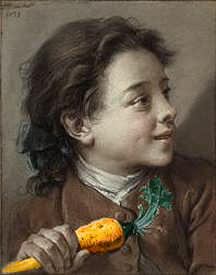4.09.2008

Film and video artists often get overlooked in a study of Art History, shifted at best to tangents and footnotes. However, as more emphasis is placed on integrating the medium of the 21st century the importance of looking at this genre becomes more apparent. Most of our interaction with the moving image is limited to fiction, non-fiction, and advertising - and so there is always some message or idea that the video or film serves. In this art form, however the viewer is invited to experience a moving image in a variety of new ways, from moving painting to installation. Issues of composition, color, and the elements of art become more critical to the experience. I'm starting a lesson in Film and Video Art with my Digital Video class, so I think I'll spend a few days posting about some of my favorites:
Perhaps best known for his non-credited work on Disney's Fantasia(1940), Oskar Fischinger was a pioneer of animation and video art. He created abstract compositions that were studies in movement and color in pre-war Germany, but eventually had to go underground for creating what was considered "degenerate art". It was the following piece, Komposition in Blau that garnered him the attention of the Hollywood elite and a ticket to America. Check it out before Youtube takes it down.
It's wonderful.
Update: An anonymous poster writes in to suggest a great Fischinger website at the Center for Visual Music. Thanks mystery person!
Tags: Art History, film, Film Art, Video, Video Art















www.centerforvisualmusic.org/Fischinger
A DVD of Fischinger's work is available through the Center for Visual Music in Los Angeles.